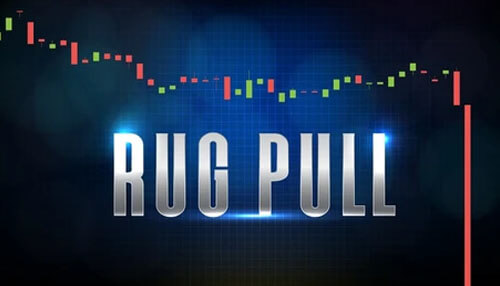Crypto rug pull scams brought in over $2.8 billion in 2021, according to Chainalysis, a blockchain research firm. Last year, the frauds accounted for nearly 36% of the $7.7 billion in virtual currencies stolen from victims all across the world. According to Chainalysis, the tokens are frequently published on decentralized exchanges without undergoing a code audit — a third-party review that ensures the code complies with norms of good governance and is not equipped with mechanisms that might expose them to fraud.
In 2021, the most notable rug pull was a token allegedly linked to the hit Korean Netflix drama “Squid Game.” The SQUID coin soared to a high of US$2,861 in early November before plummeting as the developers walked away with an estimated $3.38 million. “The enthusiasm around a lot of these new currencies is something that is exploited,” Kim Grauer said, hoping that as the sector matures, both investors and retailers would be able to spot these types of scams.
What is a rug pull, exactly?
To improve their value and general liquidity, developers produce new crypto tokens and market them to investors in a rug pull. They then drain the funding pool and devalue the token before disappearing with the money.
Rug pulls in cryptocurrencies are simple to spot once you understand how they work. Consider the following examples:
1. The Thodex
Before the pull, Thodex had amassed a user base of 390,000 financial users. The decentralized exchange was abruptly shut down in April 2021. Faruk Fatih Ozer, the company’s founder, is said to have fled to Albania with $2 billion in investor cash.
2. Compounder Finance
A platform for Defi Compounder Finance staged a heist for more than $10.8 million in stolen funds. To entice their targets into investing, they cleverly imitated the moniker of Compound Finance, a legitimate Defi interest-earning mechanism. The team substituted harmful contracts for their secure and audited contracts, allowing them to steal locked investor funds.
3. WhaleFarm
In exchange for staking their pool, the Defi project token offered customers unheard-of rewards. It fell in a matter of minutes, defrauding investors of $2.3 million in cryptocurrency. The crew, which has remained completely anonymous since the beginning, has yet to be named.
We can easily recognize a rug pull from a distance if we know the instances, but let’s dig deeper.
How to Recognize Rug Pulls
The creators have chosen to remain unidentified.
It’s a significant red signal if a project has no ties to other successful community projects or the crypto community as a whole. Because unscrupulous actors can’t be followed after pulling off a rug pull, the project’s website should include information about the crew.
A significant price increase.
The cryptocurrency market is turbulent, but some volatility necessitates caution. If you don’t understand why the value is rapidly climbing, it’s likely a pump that will be dumped shortly.
Marketing efforts are extensive.
Investors should examine the project’s GitHub account for development activity as part of their current research. If the creators are more concerned with marketing than with delivering, they are most likely focused on enticing people in without providing any real value.
There is no risk of a liquidity lockout.
The majority of legitimate liquidity pools bind investor funds for a set period. An investor’s lockup is better protected with a locked pool. The lack of a liquidity lockup indicates that it would be simple to drain the pool, which is a warning sign.
The yields are very high.
If a yield farm appears to be giving profits that are too good to be true, they most likely are. WhaleFarm, for example, had rates that were more than 100% APY. There’s something fishy about that.
Limit on buy or sell orders.
A bad actor can program a token to prevent some investors from selling while allowing others to do so. It can be difficult to detect the presence of a selling restriction because they are coded. One of the greatest methods to see if this is true is to purchase a little amount of the new coin and then try to sell it as soon as possible. If you run into any odd problems, the project is almost certainly a rip-off.



